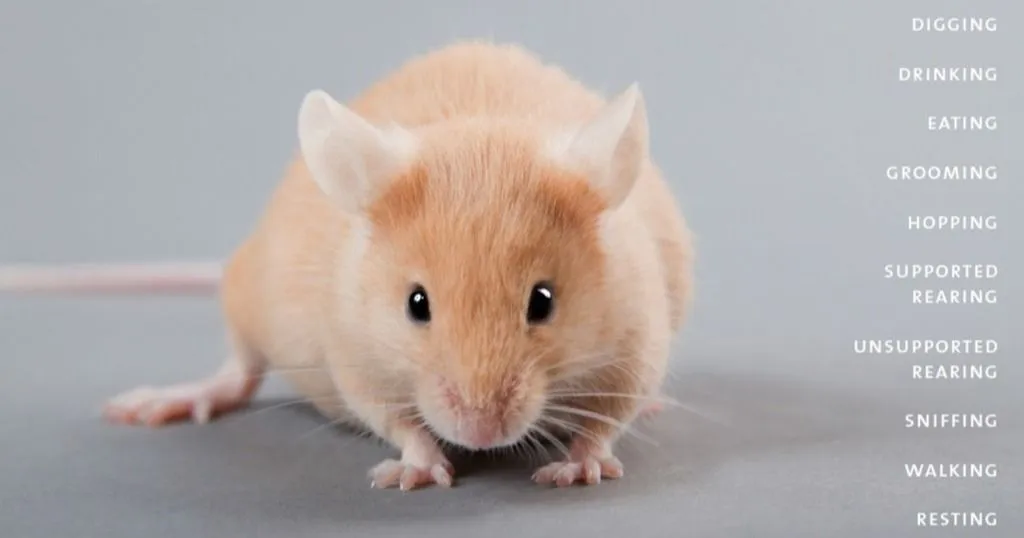Why guinea pigs are just like us
If zebrafish are the new mice, guinea pigs might be the new rats. Guinea pigs differ from mice and rats, and that just might make them more suitable due to the fact that these results are more easily translated to humans.
Posted by
Published on
Sat 08 Feb. 2014
Topics
| Circadian Rhythmicity | EthoVision XT | Guinea Pigs | Home Cage | Video Tracking |

If zebrafish are the new mice, guinea pigs might be the new rats. According to Kiera-Nicole Lee and her colleagues, guinea pigs differ from mice and rats, and that just might make them more suitable for some neuroscience research due to the fact that these results are more easily translated to humans.
Guinea pigs are different than rats and mice
Lee predicts that “guinea pigs may offer subtle behavior repertoires that better mimic human activity”. They are already favored in ontological research as their ears are similar to ours, and they are widely used in immunology. And while rats and mice are born with relatively underdeveloped eyes and brain, guinea pigs, like humans, are more advanced at birth.
Activity data and consequences of methamphetamine
In their recent publication in Synapse researchers set out to provide baseline data on activity and how this was influenced by dopaminergic drugs as well as methamphetamine, as they expected guinea pigs to provide a robust small model to measure brain-behavior interactions that are relevant to human behavior. All of their activity tests were performed in a home cage setting using PhenoTyper.
Baseline activity
Over 30 male guinea pigs were divided over six treatment groups. All of them were first habituated and then observed for a day in the home cage. The day after, the six groups received their treatment, followed by another day of observation in the home cage to determine the effects on baseline activity.
Treatment groups
The first group served as a control and received a saline injection. The second, third, and fourth groups received a dopamine receptor 1 agonist, a dopamine receptor 1 antagonist, and a dopamine receptor 2 antagonist, respectively. The fifth and sixth groups received a low and high dose of methamphetamine, respectively.
Before and after acute administration of each treatment, animals were continuously monitored for a little less than a day.
Additionally, the effects of chronic exposure to methamphetamine were measured, and so the saline (control) group and the two groups receiving methamphetamine were injected daily for 7 days. After that an additional day of observation in the PhenoTyper took place.
Data
Lee and her colleagues were interested in both occupancy profiles and locomotor activity. To determine occupancy, the home cage was digitally divided into 3 areas of interest (zones): the hidden zone, which is the shelter, the food/water zone, and the rest of the arena. Variables measured with EthoVision XT video tracking included: total distance traveled, duration of space occupancy, and peak periods of movement.
No nocturnal rhythmicity
All guinea pigs spent most of their time in their ‘safe place’; the shelter. The second most visited area was the food/water zone. In addition, they spent more time in the shelter during daylight than during the nighttime. Guinea pigs also showed thigmotaxis: the majority of their locomotion took place in the periphery of the arena.
Although the distance moved was greater during the dark phases, the guinea pigs did not show a nocturnal rhythm, different from rats and mice. Rather, their rhythm indicated to be more ultradian, showing activity throughout the complete 22-hour period in which they were observed. There was also no evidence of prolonged sleep states.
Less time in the shelter
The only treatment that caused the animals to spend less time in the shelter was the acute administration of the dopamine receptor 1 antagonist. This can indicate a decrease in anxiety levels, but might also be a sign of altered motivation.
Effects of methamphetamine on locomotion
The differences between low and high doses of methamphetamine were diverse. An acute low dose of methamphetamine caused significant changes in activity; guinea pigs initially showed hyperactivity and a higher peak activity, but locomotor declined after that. As a consequence, total distance moved over the total 22-hour observation period did not differ significantly from baseline levels before treatment.
Interestingly, chronic treatment with low doses of methamphetamine no longer produced the hyperactivity. Only the higher dose of methamphetamine caused a higher distance moved over the complete observation period. This hyperactivity was even greater after chronic exposure.
Effects of methamphetamine on occupancy
Acute versus chronic treatment with low doses of methamphetamine has a significantly different effect - the chronic administration caused animals to spend more time in the shelter compared to before the treatment, while the acute administration did not. This difference was not seen when comparing the acute and chronic administration of high doses of methamphetamine, but there were significant differences between the low and high chronic exposures to methamphetamine.
Also, while chronic low doses caused a decrease in time spent in the food/water zone relative to before the treatment, chronic high doses did the opposite. This opposite effect between low and high doses was also seen in the time spent in the rest of the arena.
These results show that the effects of methamphetamine are diverse and depend on both dose and repetition of administration. The authors suggest that this can be caused by the complicated and dose-dependent involvement of methamphetamine with various neurotransmitter systems.
Guinea pigs vs rats and mice
Besides the diverse effects of methamphetamine on the behavior of guinea pigs, this study also reveals some of the similarities and differences between animal species. These findings are of interest for further research that involves guinea pigs as test subjects instead of the traditional rats and mice. For one, guinea pigs, like rats and mice, show thigmotaxis. The authors suggest this makes them suitable for experiments such as fear-conditioning.
On the other hand, their rhythmicity makes them stand out. They are neither nocturnal nor diurnal, eliminating the need for a reversed light-dark cycle. Their intermittent activity and sleep patterns might also make them interesting for research on brain processes and sleep.
If you want to know more about this study, please take a look at:
Lee, K.-N.; Pellom, S.T.; Oliver, E.; Chirwa, S. Characterization of the guinea pig animal model and subsequent comparison of the behavioral effects of selective dopaminergic drugs and methamphetamine. Synapse, accepted article, doi: 10.1002/syn.21731.
For more information on home cage phenotyping: PhenoTyper
For more information on video tracking: EthoVision XT
Related Posts

Noldus top tips! Our latest must-read animal blogs

Decoding Gorillas’ gestures: Insights into primate communication

